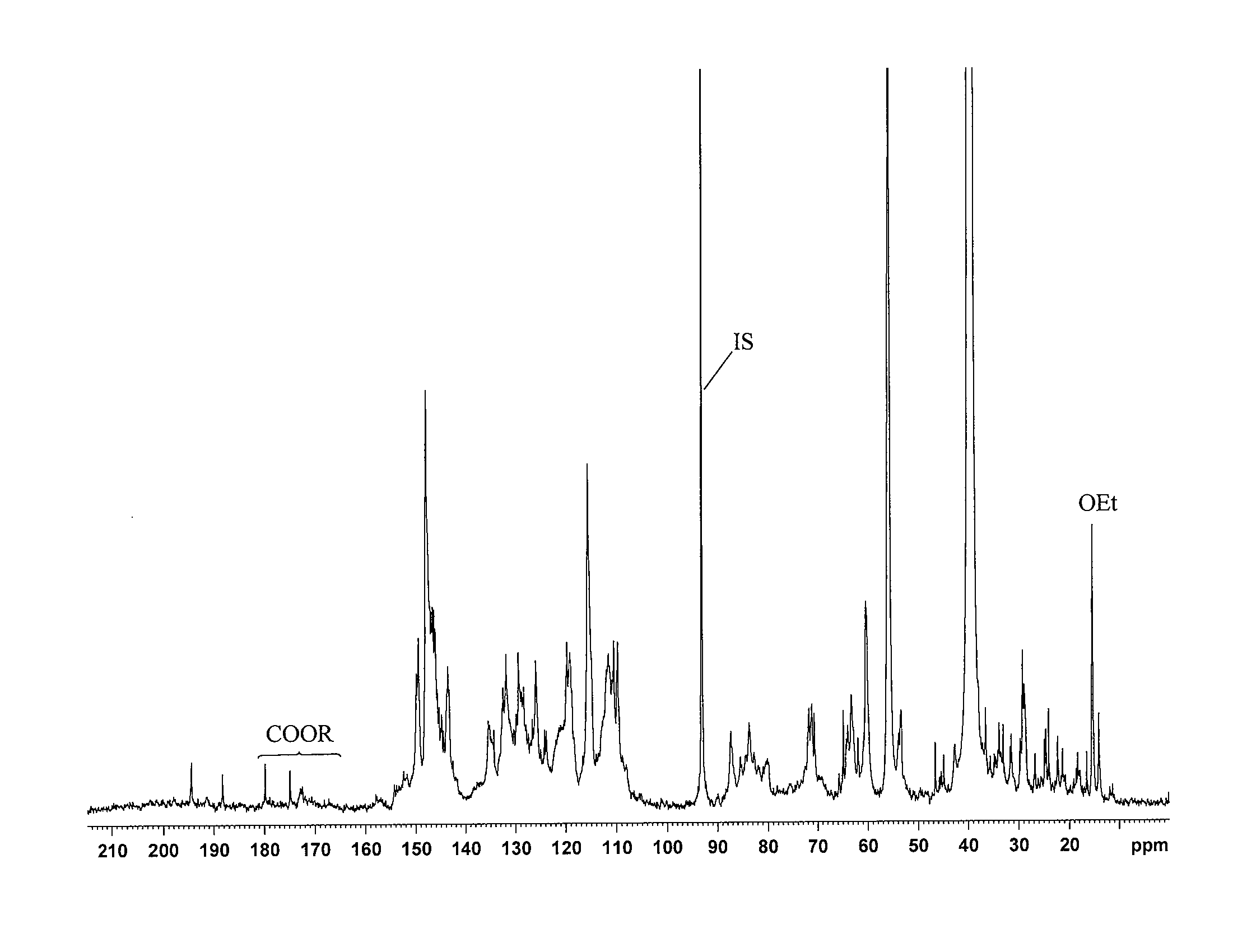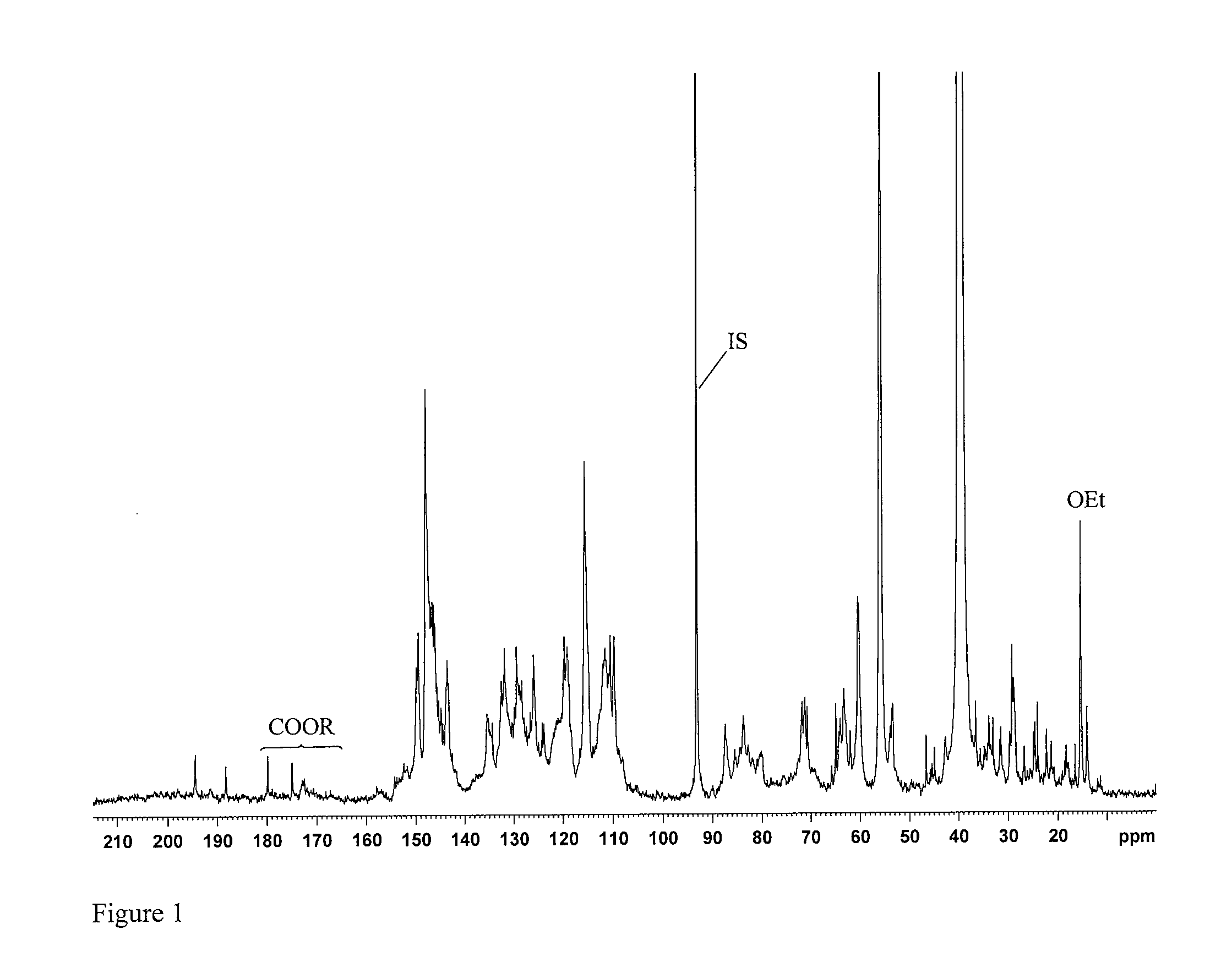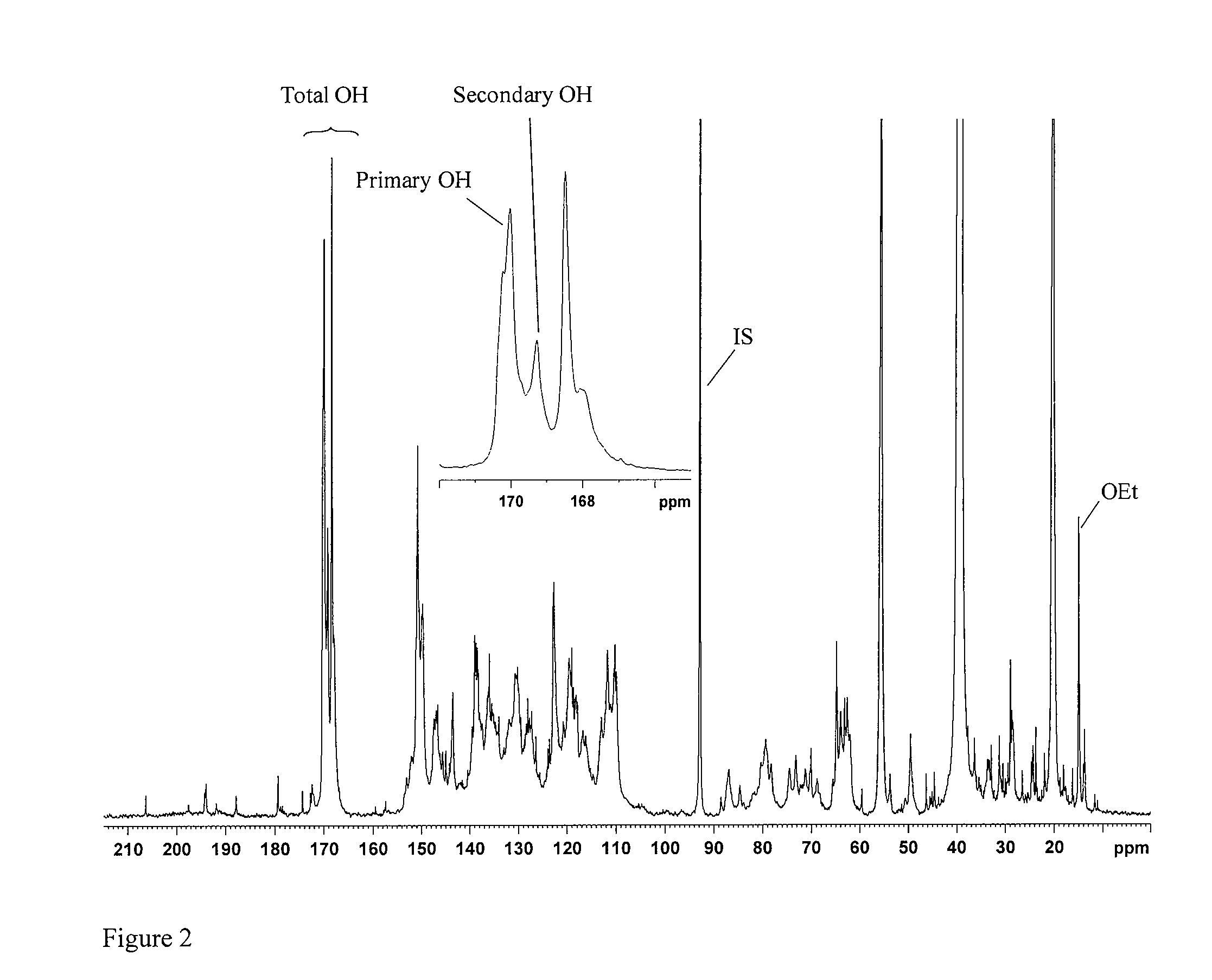Derivatives of native lignin from softwood feedstocks
- Summary
- Abstract
- Description
- Claims
- Application Information
AI Technical Summary
Benefits of technology
Problems solved by technology
Method used
Image
Examples
example 1
Recovery of Lignin Derivatives from Softwood Feedstocks
[0066]Softwood feedstock chips were prepared from: (1) hybrid spruce trees grown in British Columbia, (2) radiata pine grown in Chile, and (3) loblolly pine grown in Southeastern USA. Four samples of the hybrid spruce woodchips were individually pulped using an acid-catalysed ethanol organosolv pulping process wherein a different set of pulping conditions was used for each sample (Table 1). Process conditions for pulping four samples of the radiata pine chips are shown in Table 2. Process conditions for pulping four samples of the loblolly pine chips are shown in Table 3.
[0067]
TABLE 1Pulping conditions for hybrid spruce wood chip samplesat 6:1 liquor-to-wood ratio.TimeTemperatureRun #pHAcid %min° C.Ethanol %PL %11.951.90331795763.8922.180.90551844740.4231.812.50361757871.8442.121.20411816870.59
[0068]
TABLE 2Pulping conditions for radiata pine wood chip samplesat 6:1 liquor-to-wood ratio.TimeTemperatureRun #pHAcid %min° C.Ethanol ...
example 2
Characterization of the Aliphatic Hydroxyl Content of Lignin Derivatives Recovered from Three Softwood Species
[0072]Functionalized lignin derivatives recovered from hardwood biomass samples as described above, were analyzed to determine the content of primary hydroxyl groups mmol / g sample (OH-pr mmol / g) and content of secondary hydroxyl groups mmol / g sample (OH-sec mmol / g). These values were then used to calculate mmol aliphatic hydroxyl groups / g sample (OH-al mmol / g).
[0073]The hydroxyl contents were determined by quantitative 13C NMR spectroscopy on a Bruker 600 MHz spectrometer equipped with Cryoprobe at 300 K using ca 30% solutions of sample in DMSO-d6. Chemical shifts were referenced to TMS (0.0 ppm). To ensure more accurate baseline, especially in the carbonyl region (215-185 ppm), the spectra were recorded in the interval 240-(−40) ppm. The following conditions were provided for the quantitative 13C-NMR:[0074]1. Inverse gate detection;[0075]2. a 90° pulse;[0076]3. Complete rel...
example 3
Characterization of the NRSI of Lignin Derivatives Recovered from Three Softwood Species
[0086]The lignin derivatives samples produced above were assessed for their radical scavenging index (RSI). The potential antioxidant activity of each PL lignin derivative was determined by measuring its radical savaging capacity. The assay used 2,2-diphenyl-1-picrylhydrazyl (DPPH), a stabile free radical which absorbs light strongly at 515 nm to measure a compound's radical scavenging index (RSI). In its radical form, DPPH. absorbs strongly at 515 nm and has a deep purple colour. As DPPH gives up its free electron to radical scavengers, it loses its purple colour and its absorbance shifts to 520 nm. The greater the drop in DPPH absorbance at 515 nm after a test compound has been added to the DPPH solution, the higher the compound's free RSI and also, its antioxidant activity. In the present study, Vit. E and BHT were used as positive controls. HPLY lignin derivative subsamples (1.0-2.0 mg), Vit....
PUM
| Property | Measurement | Unit |
|---|---|---|
| Molality | aaaaa | aaaaa |
| Molality | aaaaa | aaaaa |
| Molality | aaaaa | aaaaa |
Abstract
Description
Claims
Application Information
 Login to View More
Login to View More - R&D
- Intellectual Property
- Life Sciences
- Materials
- Tech Scout
- Unparalleled Data Quality
- Higher Quality Content
- 60% Fewer Hallucinations
Browse by: Latest US Patents, China's latest patents, Technical Efficacy Thesaurus, Application Domain, Technology Topic, Popular Technical Reports.
© 2025 PatSnap. All rights reserved.Legal|Privacy policy|Modern Slavery Act Transparency Statement|Sitemap|About US| Contact US: help@patsnap.com



